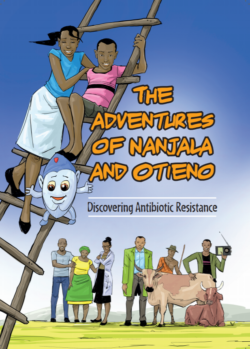Project Details: Supporting Evidence-Based Policy
Aims
- To collect data on the socio-behavioural and environmental drivers of AMR among livestock-dependent communities in India and Kenya
- To identify core parameters important to the emergence of AMR within these communities
- To develop an on-line decision-support tool to enable policy makers and practitioners to disaggregate the drivers of AMR at the community-level and explore the impact of potential policy changes
- To support awareness-raising and behavioural change related to AMR among the future generation of livestock keepers through production of educational comics for local schoolchildren
Methods
- Qualitative and quantitative data collection – household-level semi-structured interviews, focus group discussions and stakeholder meetings were held to generate both semi-structured narratives and quantitative elements. Data was gathered on a range of social, behavioural, economic and environmental factors important to the emergence of AMR, including: farmer understanding of disease pathogenesis, diagnosis, prevention and treatment; levels of antibiotic use (including timing and frequency of dosing); knowledge networks at the community level regarding health and disease; livestock drug purchasing behaviour and preferences; animal healthcare seeking behaviour and preferences; access to veterinary services; cost of livestock drugs and relative proportion of income spent on animal health; household income generating activities and the level of involvement in livestock-related livelihoods; land ownership and the gendered aspects of livestock care-taking.
- Environmental sampling – samples were gathered from the local environment (including soil, water and animal faeces), focusing on areas of interface between animals and humans, such as watering holes, livestock markets and the areas around homesteads. Samples were screened for coli before isolated bacteria were screened for phenotypic antibiotic resistance to a range of antibiotics using disc diffusion methodology.
- Decision support tool – a risk metric was generated from analysis of the data, calculating AMR risk on a community-level based on four key elements: risk of AMR transmission, access to antibiotics and healthcare professionals, presence of diseases driving antibiotic use and incorrect use of antibiotics.

An example of the graphics used in the Kenyan comic books.
Public engagement: We collaborated with local illustrators to develop educational comics for schoolchildren, delivering key messages on AMR and good antimicrobial stewardship. Focus group discussions were held with groups of schoolchildren to test images and refine story elements, ensuring the final publications were suitable for the specific local contexts in which they were distributed.
